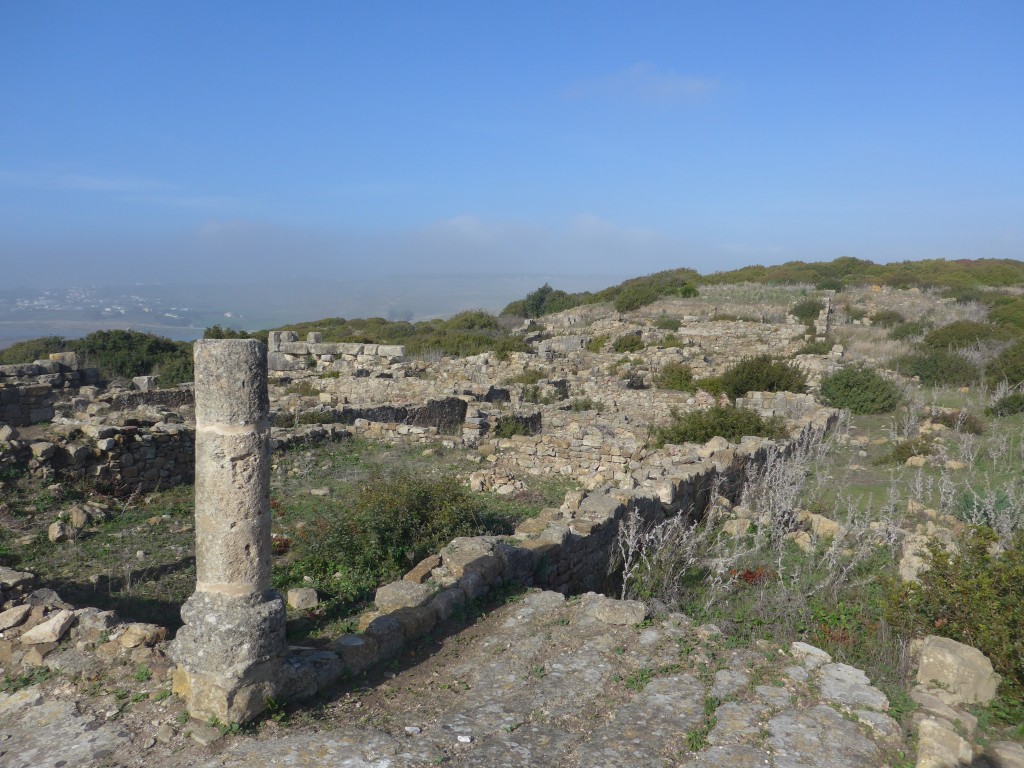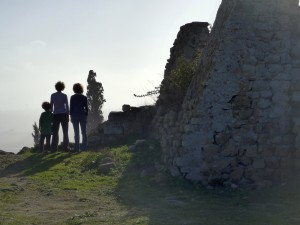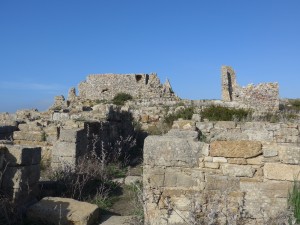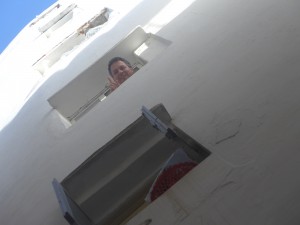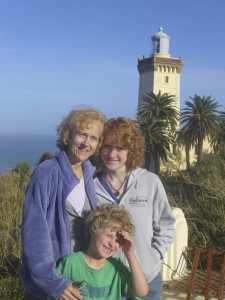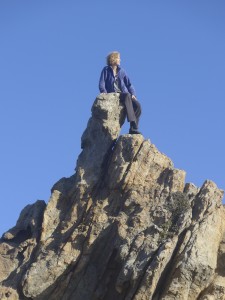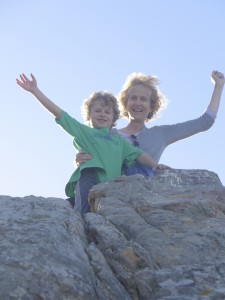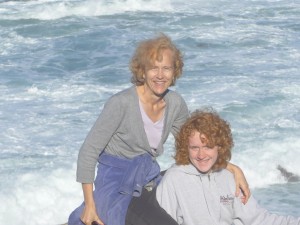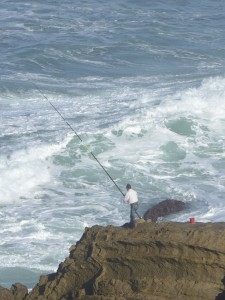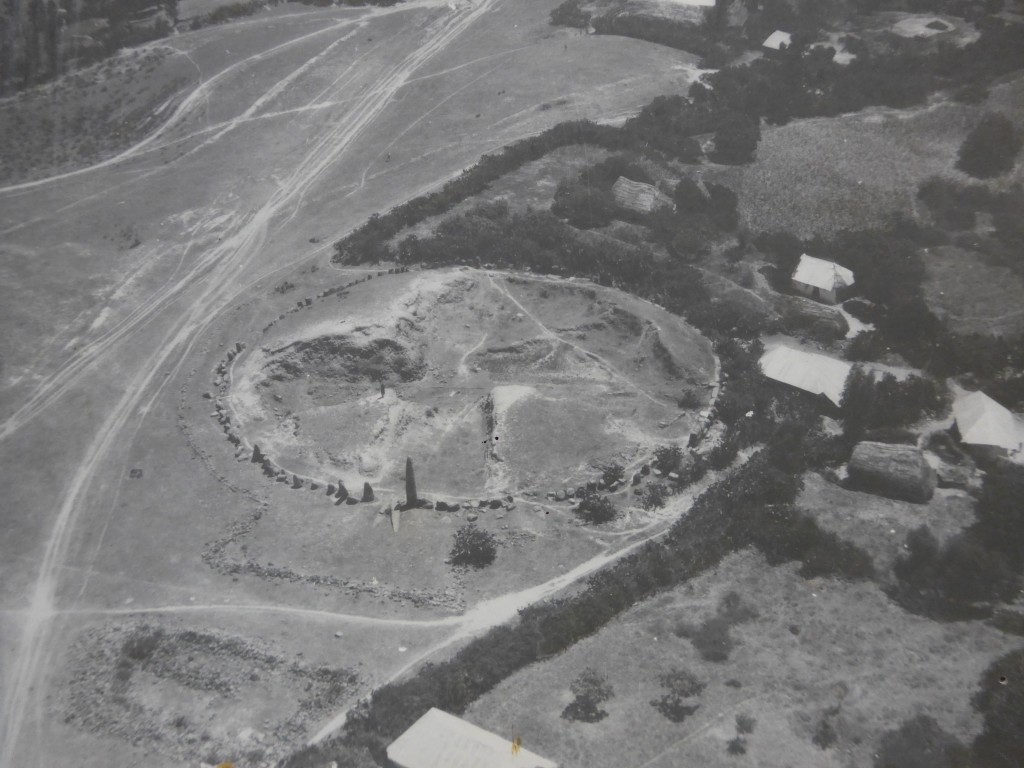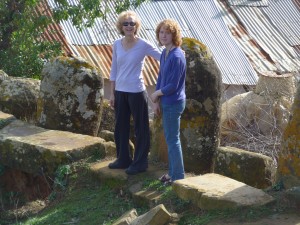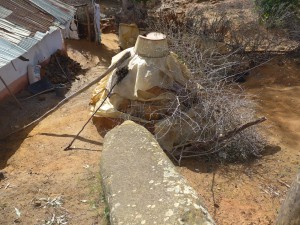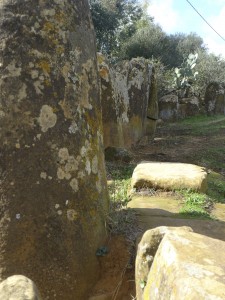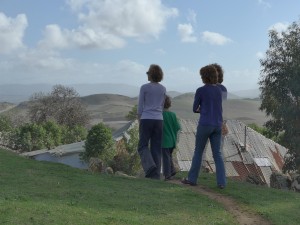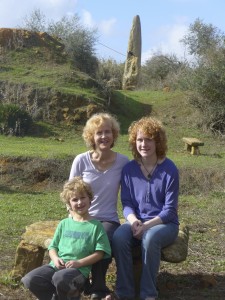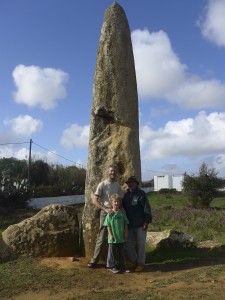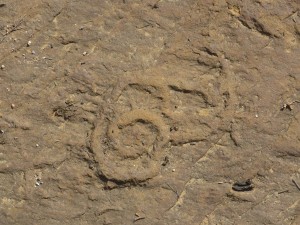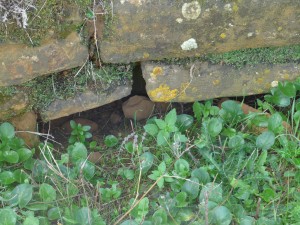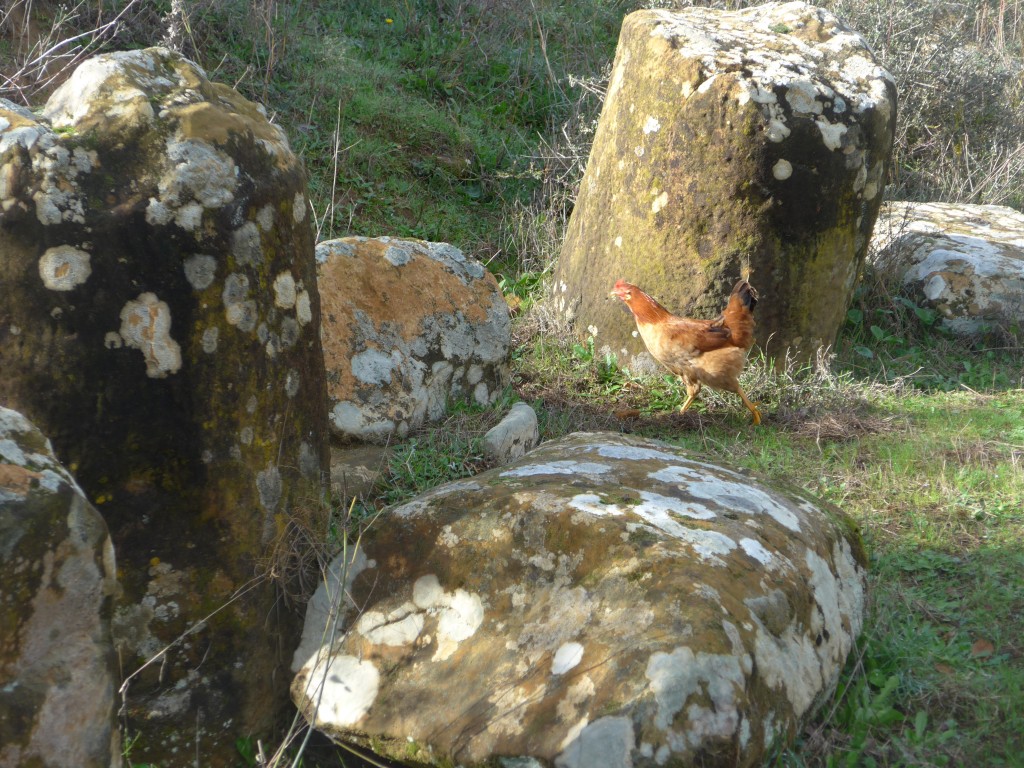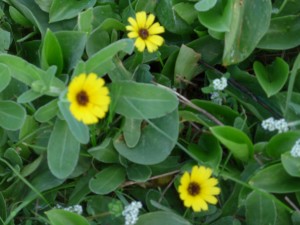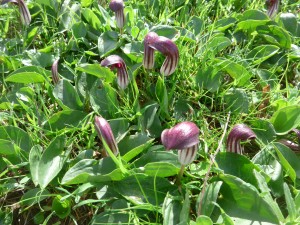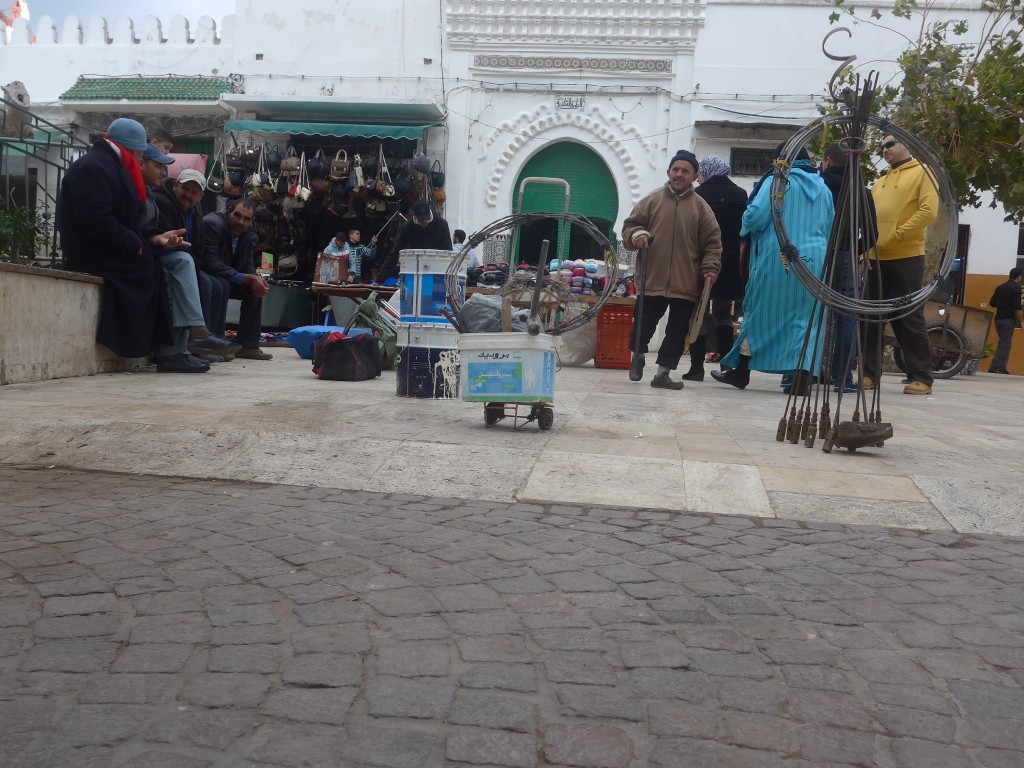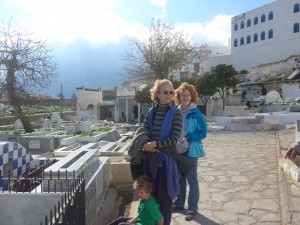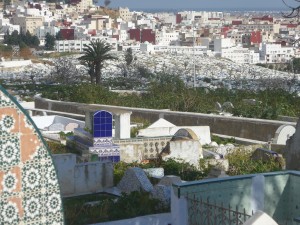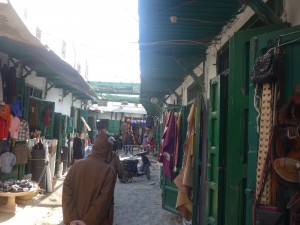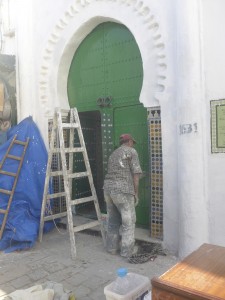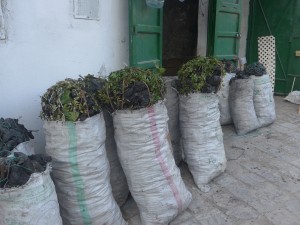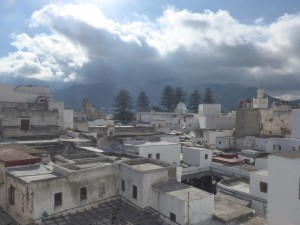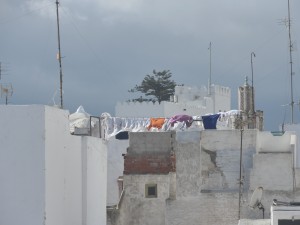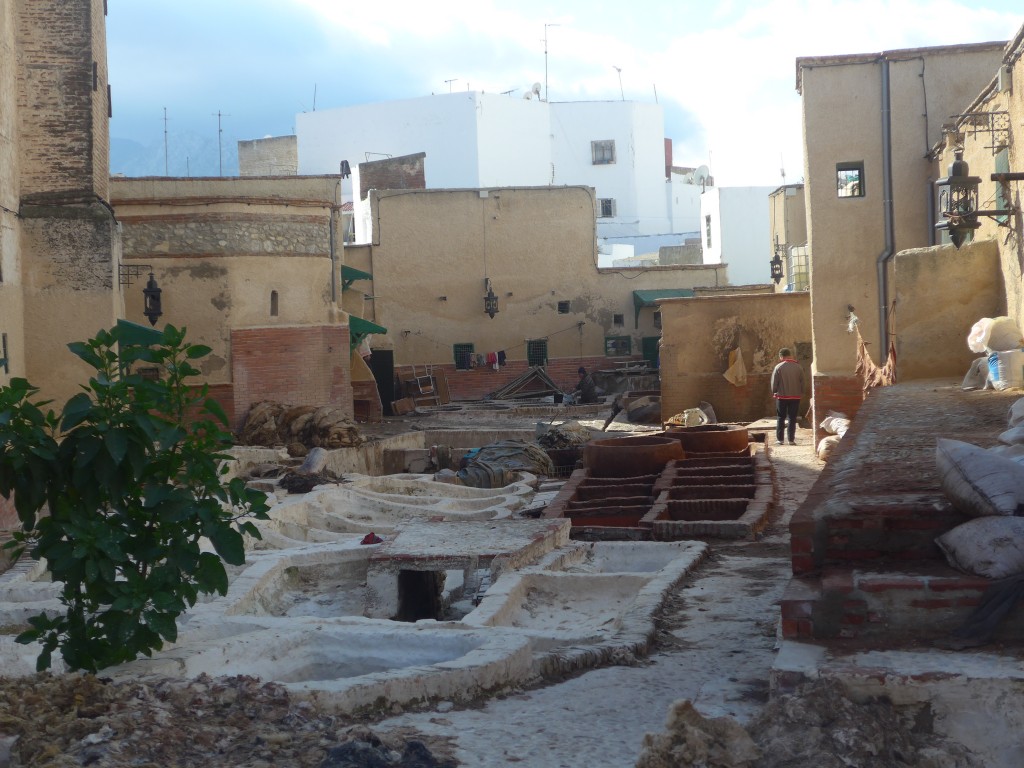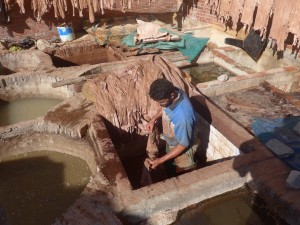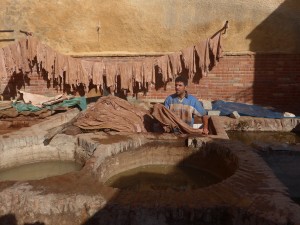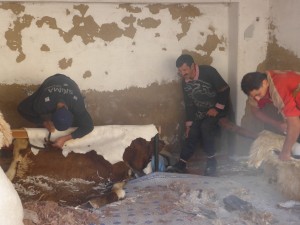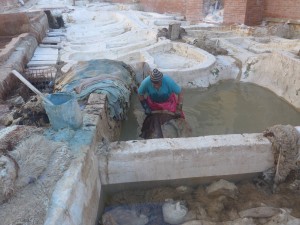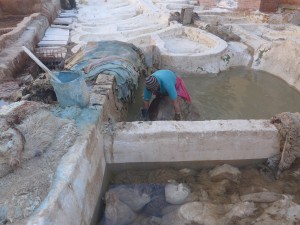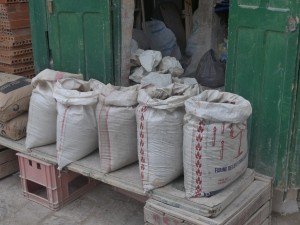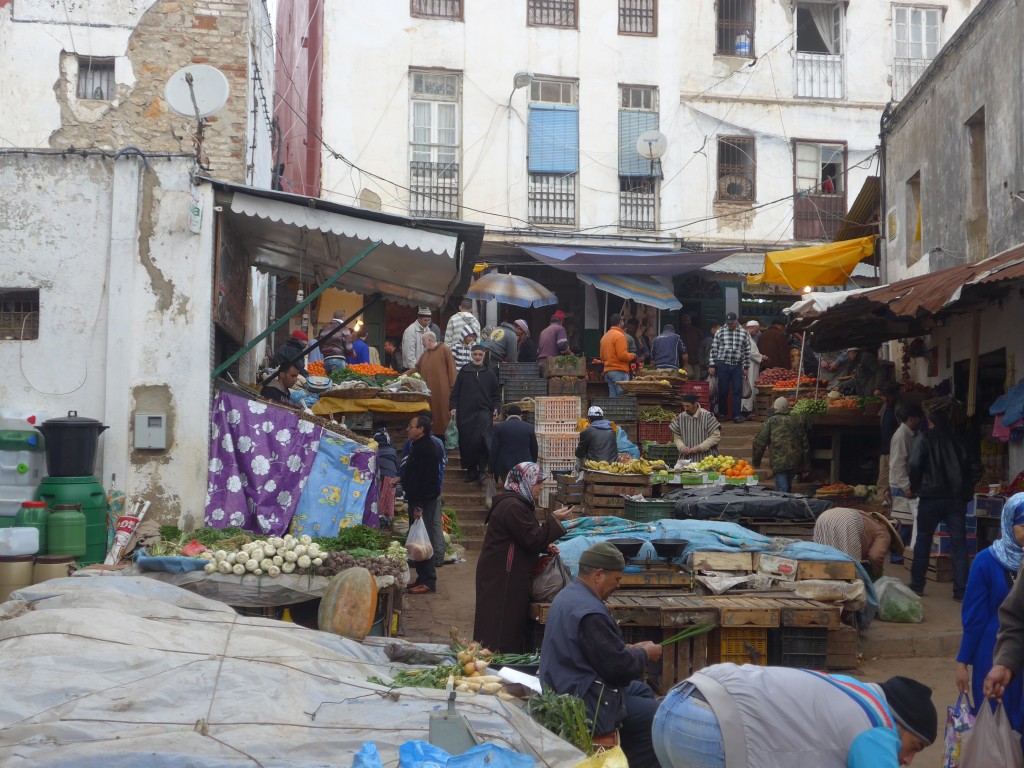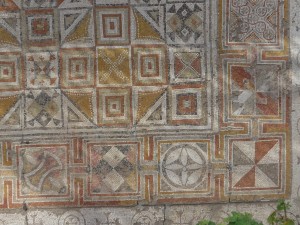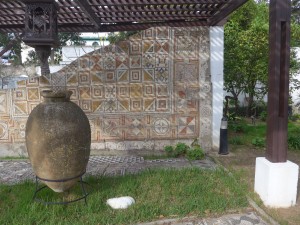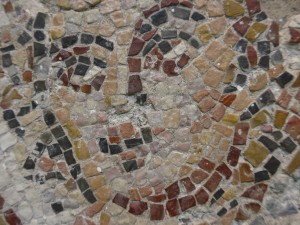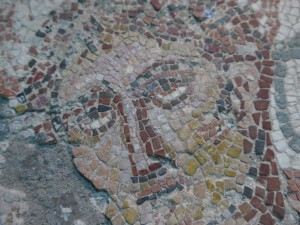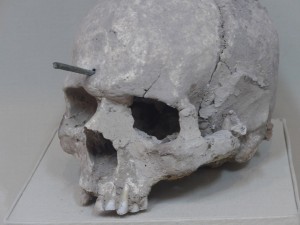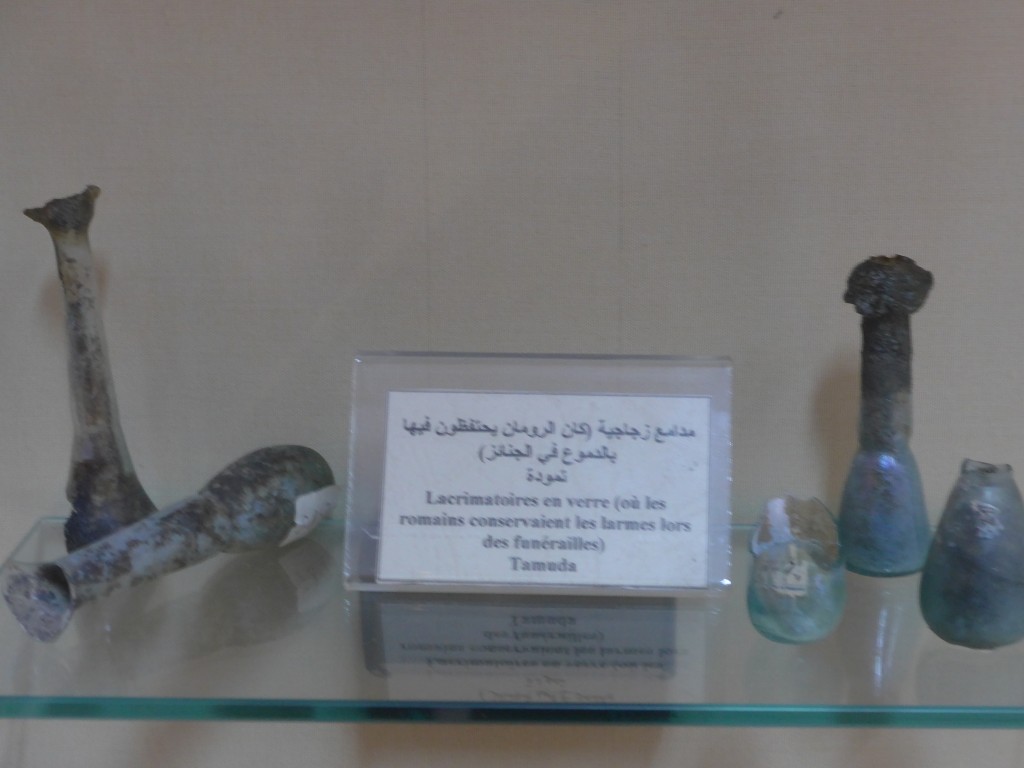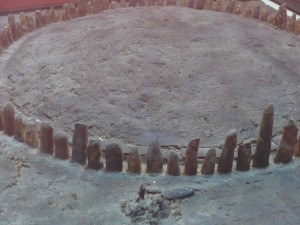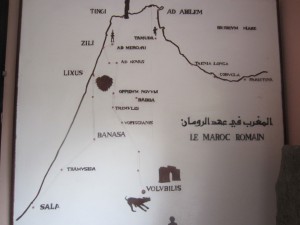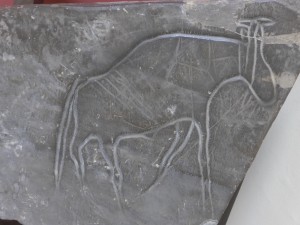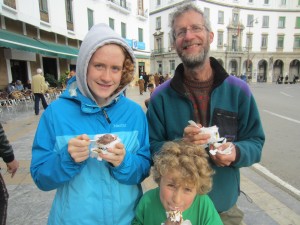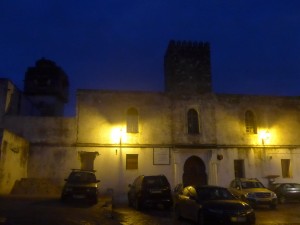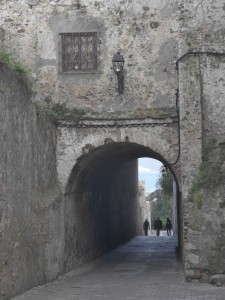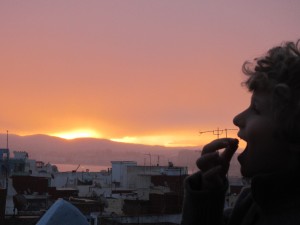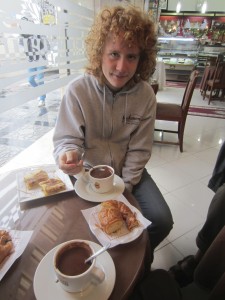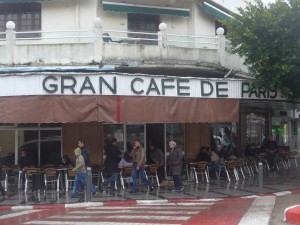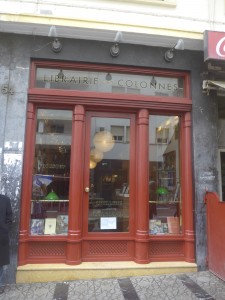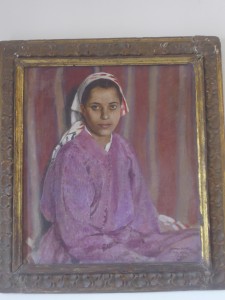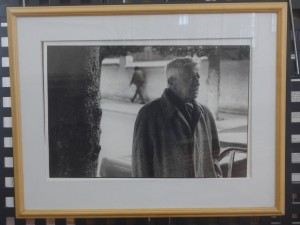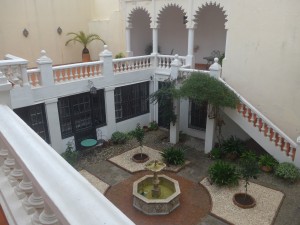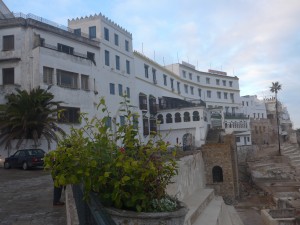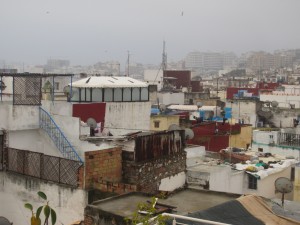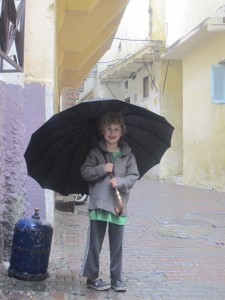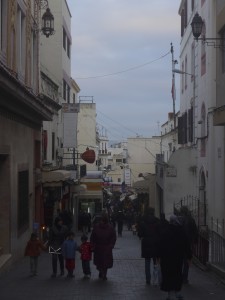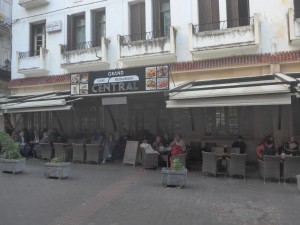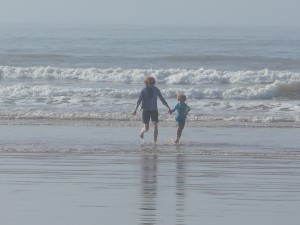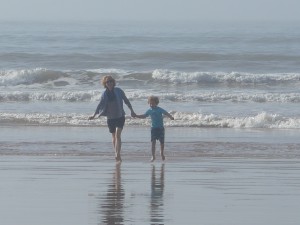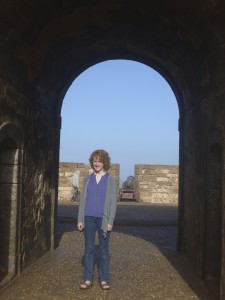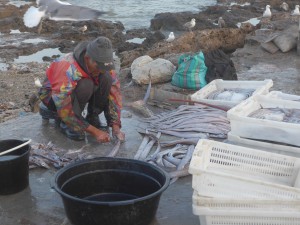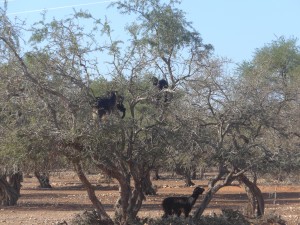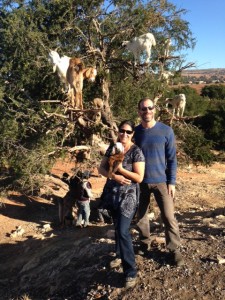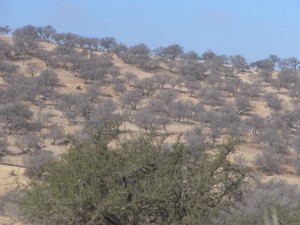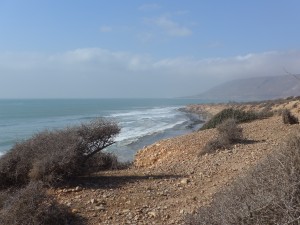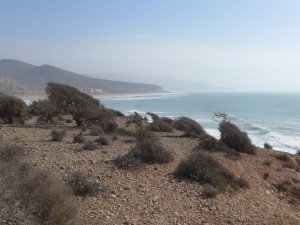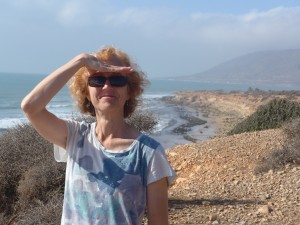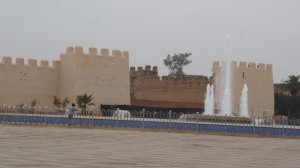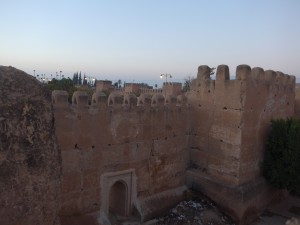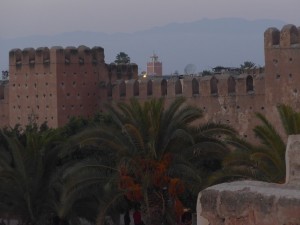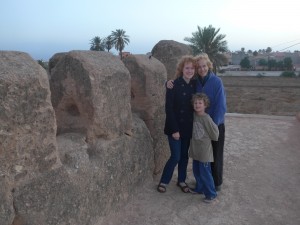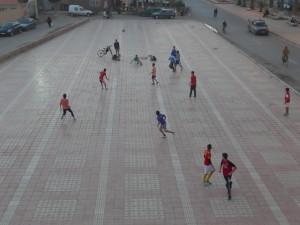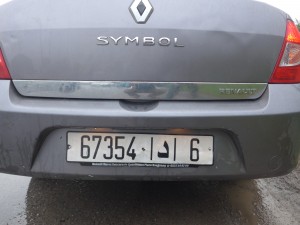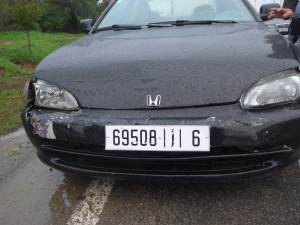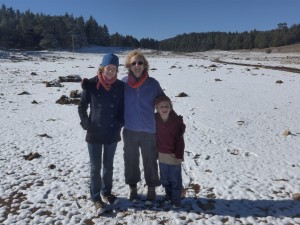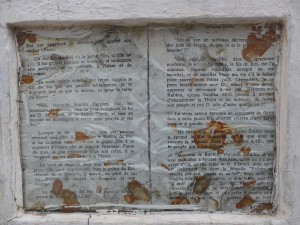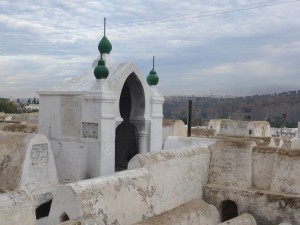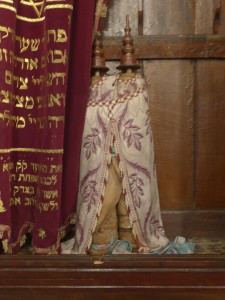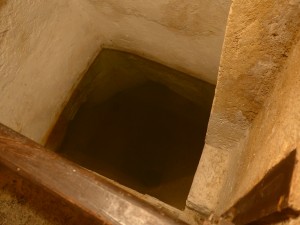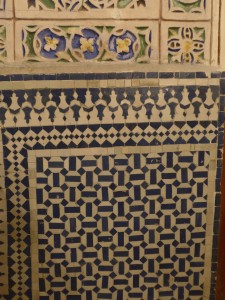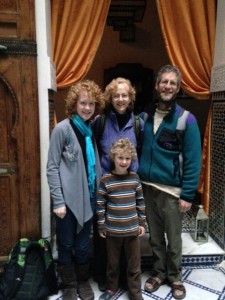From M’Soura, we drove to Lixus: a Roman ruin built on what was once the Atlantic coast. (Now the coast lies some 3 kilometers to the west–but for how long?)
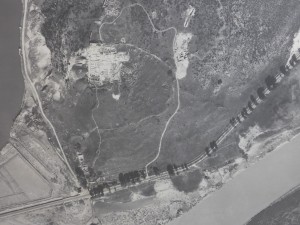
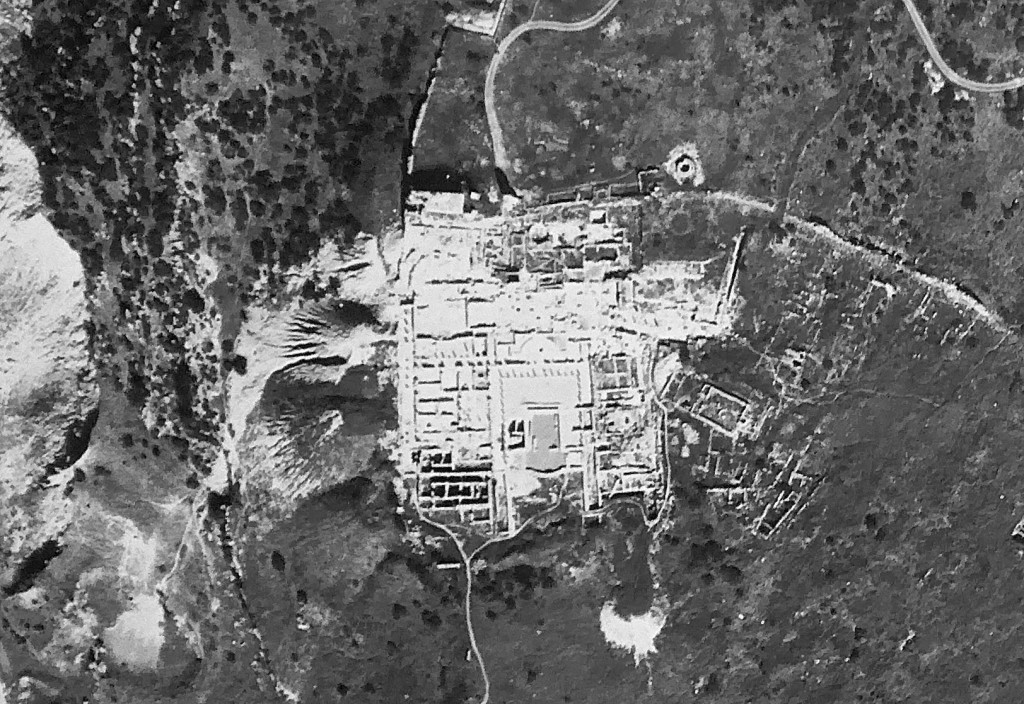
aerial photo from Tetouan archeology museum
If you like the story that M’Soura is the grave of Antaeus, you might be willing to consider Lixus the site of the famous Garden of Hesperides. After all, Hercules was on his way to steal the golden apples of the sun (tangerines, from Tangier?) when he met up with Antaeus. (According to Eric Ross, though, the golden apples of the sun are more likely to be quince, which is a popular addition to tagines when it’s in season, in the fall.) We were sad not to find either tangerines or quince trees at Lixus.
The guards at Lixus like you to wander up the hillside, past the enormous pools where the prized fish paste was made and stored:
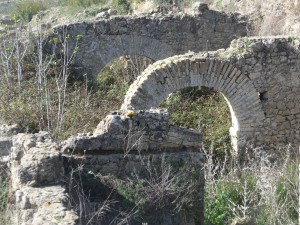
All that’s really left now are empty stone caverns and these classically beautiful arches.
A little way up the hill, you come to the baths and the amphitheatre. We had a picnic in the shade of the trees, looking out at the slow meander of the river, and then we rambled around both the baths (on the right) and the theatre (on the left).

The amphitheater itself:
 The baths:
The baths: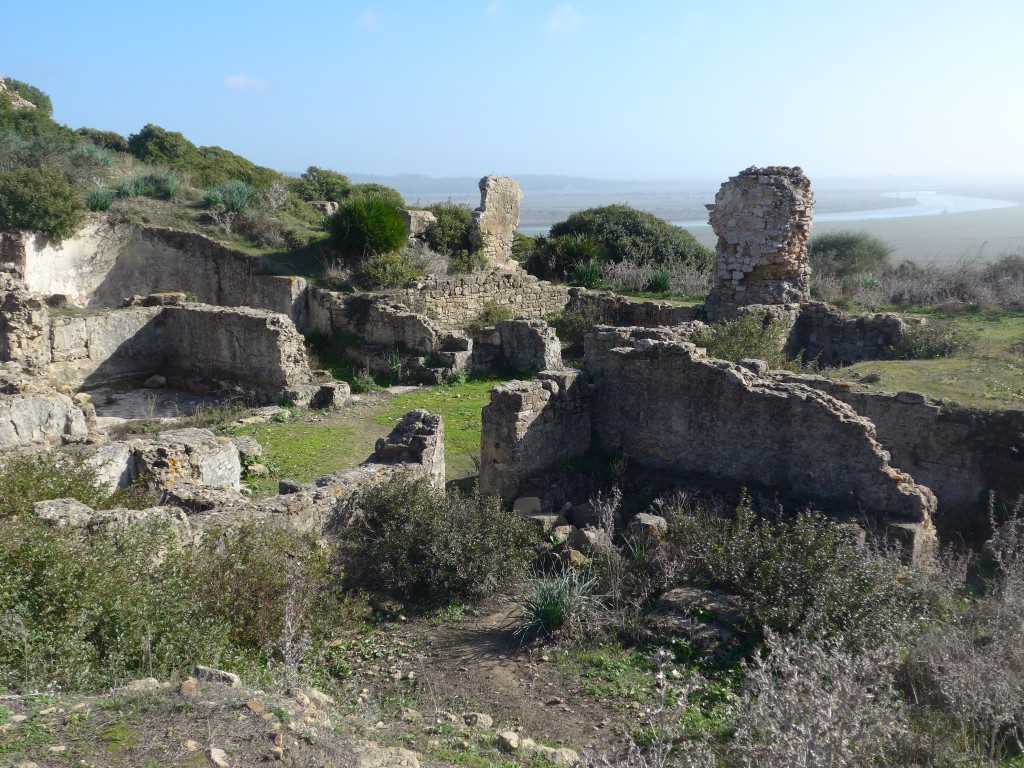
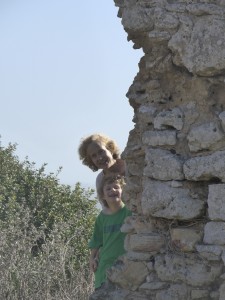
Jeremy and I made up a story about a boy from Roman days who was trying to escape his mother’s insistence that he go to the baths. He snuck out of the baths and went to sit in the theatre to watch the evening performance. (OK, it was probably more a ritual performance than dinner theatre in those days, but it kept Jeremy happy.)
The amphitheatre was simply amazing: down on the stage area, you could speak in a normal voice and your words would carry throughout the theatre as a whole–despite a breeze that would have obscured sound in the Scott Amphitheatre, for instance. And what a view the audience would have had!
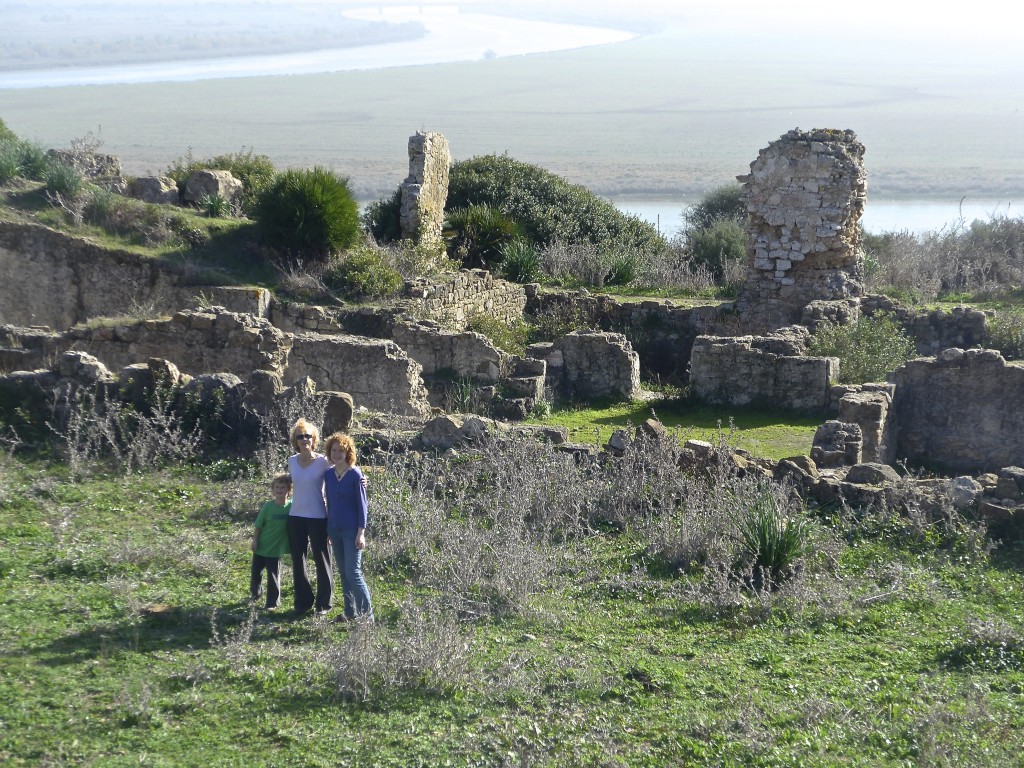
We didn’t want to leave this golden spot–remember, it’s January 5th and we’re heading back into snow–but eventually we continued up the hill, past the temple to the city proper.
The soldiers would have been quartered on the highest point of the hill, for the vantage point out over the bay.

Wealthy people had their own baths:
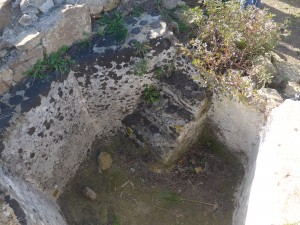
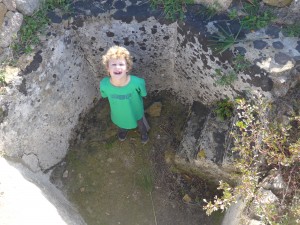 Jeremy thought he could get used to that.
Jeremy thought he could get used to that.
We loved the views out over the estuary toward the sea. If the soldiers hadn’t already nabbed this spot for the armory, we would have built our house right here.
The armoury itself (partially reconstructed) was also very evocative, however:
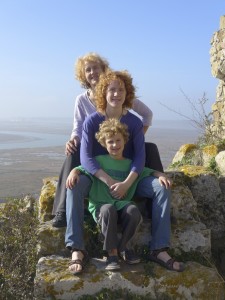
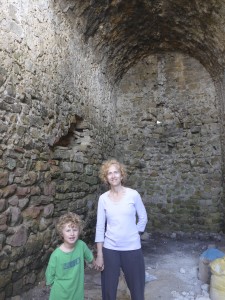
And in fact, the views are fabulous in just about every direction.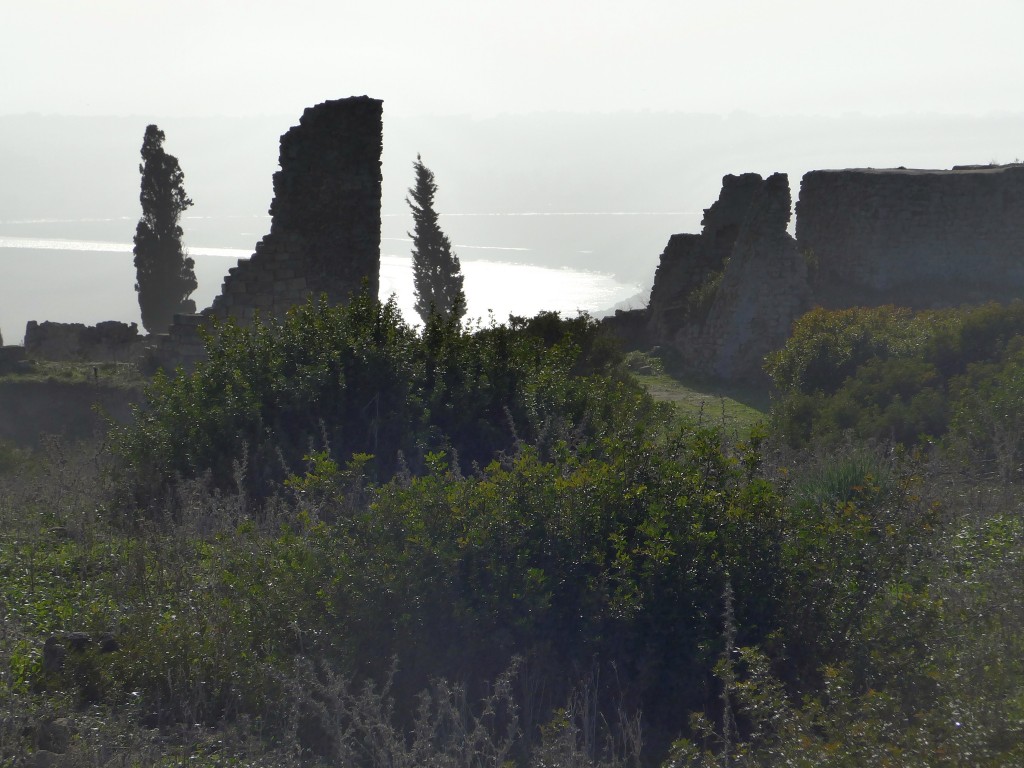
They’ve tried to create a partial reconstruction of the Forum on the site.
 We skirted around things like an altar with a stone where animals were sacrificed. Overall, we found a nice balance between wandering around delighted with our own reimaginings of what life might have been like and learning important details from the guard who had to keep an eye on us as we wandered around (even after we declined his services as a guide). He was lovely, leaving us space while also offering information when we seemed open to it. And when we gave him a little money at the end, he was startled rather than eager. He was the one who pointed out the difference between Roman building, with cement, and the Phoenician building, minus cement.
We skirted around things like an altar with a stone where animals were sacrificed. Overall, we found a nice balance between wandering around delighted with our own reimaginings of what life might have been like and learning important details from the guard who had to keep an eye on us as we wandered around (even after we declined his services as a guide). He was lovely, leaving us space while also offering information when we seemed open to it. And when we gave him a little money at the end, he was startled rather than eager. He was the one who pointed out the difference between Roman building, with cement, and the Phoenician building, minus cement.
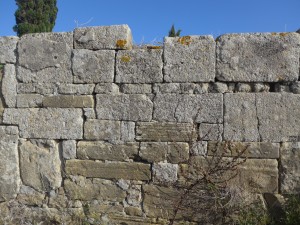
In fact, there were Phoenicians and Carthaginians here before the Romans, and one can see the levels of the city, with the Romans building above the Carthaginian/Phoenician remains. So much history. So how and why did the city ever come to be abandoned?
